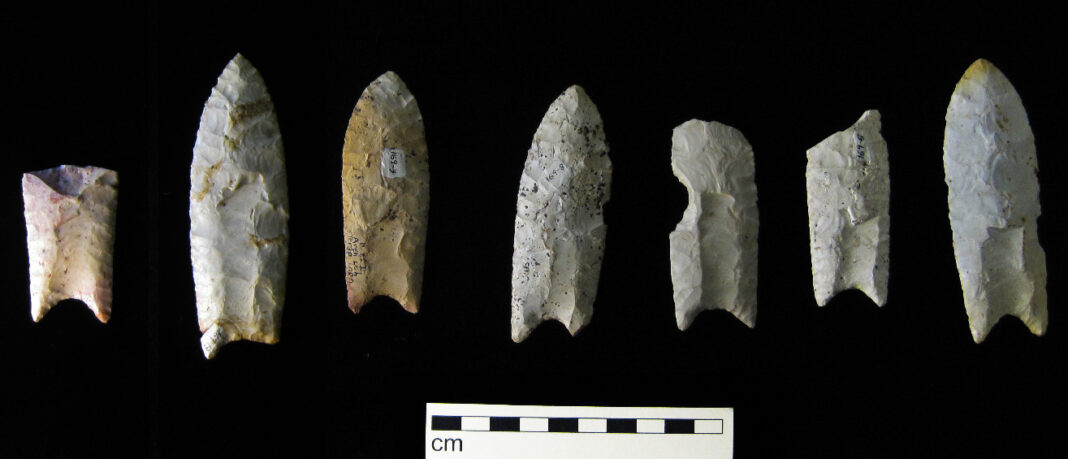Researchers have found new evidence that the first humans settled in North America much earlier than the Clovis culture that peopled the early Americas.
Discovery Of Stone Tools
A team of anthropologists at the Texas State University in San Marcos has unearthed a massive assemblage of artifacts dating as far back as 16,700 to 21,700 years ago.
The new discovery provides new evidence contradicting the long-standing theory that the first humans that arrived in North America were the Clovis people, believed to have appeared 13,500 years
ago.
The collection was unearthed at the Gault Site in Buttermilk Creek Valley just 40 miles north of Austin in central Texas. The site has abundant water sources and high-quality flint outcroppings for making stone tools, making it an attractive spot for early humans to settle on.
Debunking The ‘Clovis First’ Theory
For nearly a century, the prevailing theory for human settlement in North America was “Clovis First.” Dating techniques peg the oldest Clovis artifacts to as far back as 13,500 years ago.
The first stone tools were discovered in the 1920s in Clovis, New Mexico, but later research unveiled similar stone tools spread out across Colorado and Utah.
The Gault Site is also replete with artifacts from the Clovis culture, particularly the thin, sharp spearheads with distinct fluting.
The latest study, however, found layers in the sediments at the excavation site, with older layers revealing stone tools distinct from the spearpoints created by the Clovis people.
Distinct Stone Tools Dating Back to 21,000 Years Ago
In a new paper published in the online journal Science Advances, anthropologists found an array of stone tools different from other artifacts found across North America.
The team dug into the bedrock at the site and found stratified sediment layers corresponding to the various cultures that lived in the area. They found a layer of sediments attributed to the Clovis people that lived in the area 13,000 years ago.
Beneath that was an older layer that yielded some 150,000 stone tools that were very different from the Clovis spearpoints. These included hand axes, spearheads, scrapers, and engraving tools made from various stone materials.
“These projectile points are unique. We haven’t found anything else like them,” says study lead Thomas Williams of the Department of Anthropology at Texas State University. “Combine that with the ages and the fact that it underlies a Clovis component and the Gault site provides a fantastic opportunity to study the earliest human occupants in the Americas.”
New Dating Technique Yields More Accurate Results
The researchers used a new dating technique called optically stimulated luminescence. This technique involves calculating the amount of time that the sediment where the artifacts were found was exposed to sunlight.
When the sediments are covered from the sun, the quartz crystals emit a luminescence signal that allows the researchers to predict the age of the artifacts.
Using this technique, they were able to conclude that the stone tools were around some 16,700 to 21,700 years ago. The researchers estimate that the Gault Site was inhabited by humans at least 17,000 years ago.
This would have been at the peak of the last Ice Age, when North America was blanketed in permafrost and enormous glaciers were peppered throughout the continent. These would have made for harsh travel conditions for early settlers coming in from the now-underwater land bridge Beringia.
More: http://advances.sciencemag.org/content/4/7/eaar5954.full























